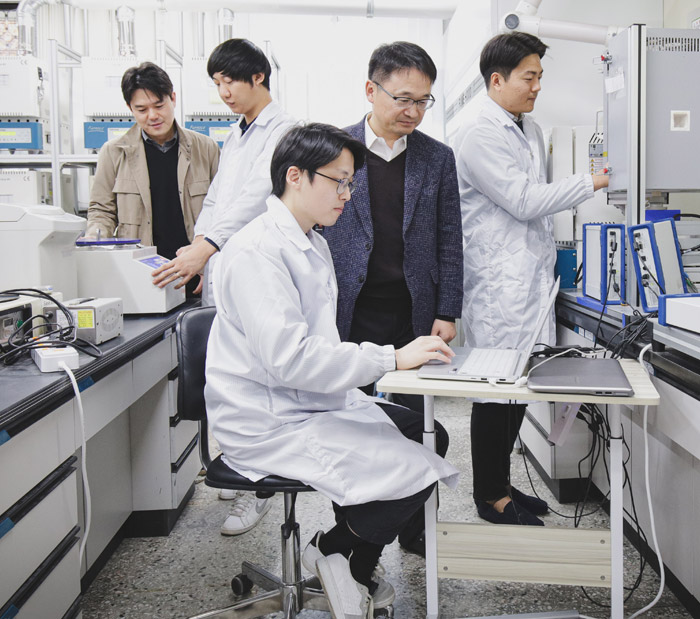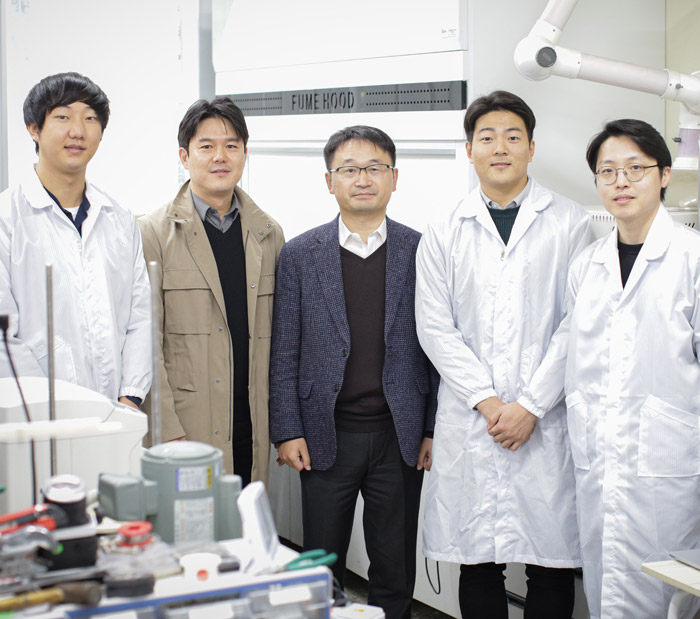Research Stories
Invention of nano-wrinkle functional layer using the ESD method
Prof. Wonyoung Lee and Prof. Doyoung Byun in the Department of Mechanical Engineering at SKKU developed nano-wrinkled functional layer for the high-performance fuel cell.
Mechanical Engineering
Prof.
LEE, WON YOUNG
Prof. Wonyoung Lee and Prof. Doyoung Byun in the Department of Mechanical Engineering (First author: Jongseo Lee / co-first authors: Sangyeon Hwang, Minwoo Ahn) at SKKU announced the development of nano-wrinkle functional layer using the electrostatic spray deposition (ESD) method for the nanofiber electrode based solid oxide fuel cells.
This research was published in Journal of Materials Chemistry A, one of the world's most prestigious journals in the energy field as a cover paper on August 2nd. This work is supported by the Technology Development Program to Solve Climate Changes (2017M1A2A2044927) and the Global Frontier R&D Program at the Center for Multiscale Energy System (Grant No. NRF-2014M3A6A7074784) and the Basic Science Research Program (NRF-2017R1E1A1A01075353) through the National Research Foundation (NRF) funded by the Ministry of Science, ICT & Future Planning. Also, it is supported by the National Research Foundation of Korea (NRF) grant funded by the Korean government (MSIP) (No. 2019R1A2C4070158).
A unique nano-wrinkled functional layer was fabricated by ESD between a porous nanofiber electrode and a dense electrolyte to extend and activate reaction sites at the interfaces for the high-performance intermediate-temperature solid oxide fuel cells. Upon the introduction of the nano-wrinkled functional layer, the polarization resistance was reduced 3.3-fold, while the peak power density was increased 2.2-fold at 650 ºC, compared to those of the reference sample.
The substantial increases in surface area and grain boundary density in the nano-wrinkled functional layer reduce both polarization resistance and activation energy, providing a significant performance enhancement. Our results demonstrate the importance of interface engineering with a cost-effective and simple ESD process to fully utilize the nanostructured electrodes for high-performance IT-SOFCs.
Prof. Wonyoung Lee said, “The structural mismatches existed at the interfaces between the nano-structured electrode and the dense electrolyte could be overcome with the nano-wrinkled functional layer.” He continued, “ESD method can greatly contribute to developing technologies at the commercialization stage because it can provide the large-area and high-speed fabrication processes for a number of nano-structures."


